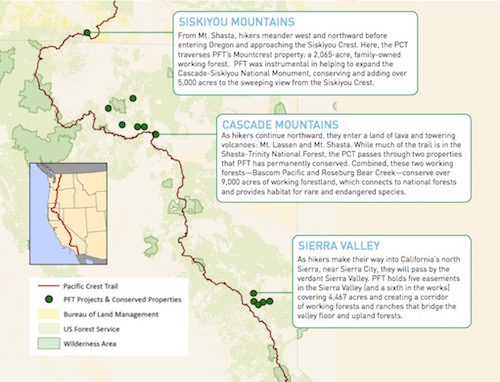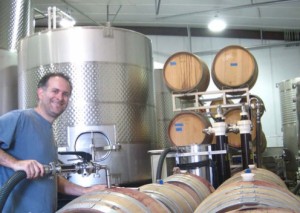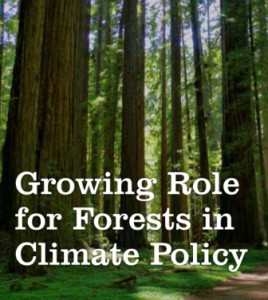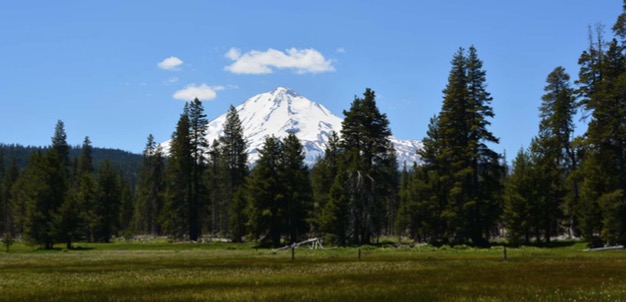
View the Full Publication
(Click the image to read the full issue.)
President’s Letter: Awe
Awe. It’s something we don’t allow ourselves to experience much anymore. But, when we do, we are grateful, as are others around us. Great trees inspire awe—gazing up at the massive heights of redwoods, ponderosa pines (there is a reason they called them ponderosa!), or even exotic eucalyptus that have thrived for over 100 years in my home state of California induces a sense of wonder and place in the world. It also induces a greater sense of humanity—toward ourselves and others.
Recent research from the University of California (UC) Berkeley, published in the Journal of Personality and Social Psychology, reports that being with and gazing at great trees for even a minute produces more generous actions from people than those who walk with their eyes glued to screens or the ground. American history and literature are filled with references to the awe-inspiring qualities of our great trees and forests. artists and leaders have long sought refuge with them and emerged refreshed, energized, and inspired.
We rarely take the time to simply be in forests; there is never enough time. and many make fun of “tree-huggers,” as if embracing a living being hundreds of years old were something silly to do. But try it, as I did not long ago, gazing up, and up, and up. I was just like those studied by UC—coming away breathing deeply, calmed, centered, and distinctly more at peace. This tree had made it through several hundred years, and that gave me some perspective.
Our work at PFT is audacious. designed to be perpetual, creating outcomes and benefits that will endure the generations; just like those ancient trees. you can see that in our almost 33,000-acre project with Collins, bringing a forest destroyed by fire back to life. or our current project with the Hart family on the flanks of Mt. Shasta. We won’t be here to see these forests flourishing in 100 years and more, but our children and children’s children will. It’s rare that people have a chance to work on something that will endure. But forests and trees will, when we make the decisions that will allow them to thrive.
When we do, we help ensure that the awe we need will be there for all future generations. So take the time to stand in a forest, or just gaze at a magnificent urban tree. as they say, it’ll be awesome!
[Return to Top]Conservation Easement Protects A Living Heritage of Stewardship
STANDING ATOP A ROCKY PROMONTORY ON OREGON’S SISKIYOU CREST, JUD PARSONS GAZED FOR MILES IN EVERY DIRECTION—EAST TO PILOT ROCK IN THE CASCADE-SISKIYOU NATIONAL MONUMENT, NORTH INTO THE EMIGRANT CREEK BASIN, WEST TO MT. ASHLAND, AND SOUTH ACROSS THE KLAMATH BASIN ALL THE WAY TO MT. SHASTA. PARSONS EXPLAINED THAT THIS CLIFF MARKED THE JUNCTION OF THE KLAMATH, SISKIYOU, AND CASCADE MOUNTAIN RANGES. PARTLY BECAUSE OF THIS MONTANE CONVERGENCE, THE REGION IS ONE OF THE MOST BIODIVERSE SPOTS ON EARTH.
Assembled by Jud Parsons’ grandfather in the early 20th century, the 2,065-acre Mountcrest Forest has seen train robbers, surveyors, and U.S. Presidents in its 100-year history. Still owned by the family, the property’s outstanding wood, water, and wildlife values are thriving under its stewardship. Jud, together with his brother, George Parson, cousin, Hugh Brady, and nephew, Ryan Tucker, asked Pacific Forest Trust (PFT) to help them find a way to keep Mountcrest and its natural bounty whole and healthy forever. Together, the Mountcrest partners and PFT have designed a working forest conservation easement to ensure that generations of careful management are never lost in the future. The partners plan to generously donate a portion of the easement value if PFT can obtain grants for the property’s conservation from other sources to match their gift.
Location, location, location
Sitting just 8 miles from ashland, Oregon, and a stone’s throw from Interstate 5, the Mountcrest Working Forest is the largest remaining non-industrial timber property in an area that has been increasingly fragmented and subdivided. located between the rogue river national Forest and the Cascade-Siskiyou national Monument (CSnM), Mountcrest provides an essential crossroads for wildlife on the move, adapting to climate change. The CSnM was the first U.S. national Monument dedicated to the preservation of biodiversity. Pacific Forest Trust has been working with the Bureau of land Management and private partners to ensure the integrity of the CSnM for 15 years through conservation easements and land purchases.
“Conserving a working forest this size, PFT was the natural partner.”
– Jud Parsons
Diverse Habitats Welcome Wildlife
With years of sustainable forestry and careful management by the Parsons family, Mountcrest contains a variety of habitat types: multi-aged mixed conifer forests with rare old growth qualities, flourishing aspen stands, oak woodlands, and rich riparian habitats. at the center of the property is an exceptional spring-fed, 300-acre wet meadow system. This meadow also happens to be Jud Parsons’ favorite place on the property. red-legged frogs and western pond turtles can enjoy its ponds. elk, black-tailed deer, and black bear roam woodlands and meadows. Great grey owls and goshawks love the mix of habitats for hunting and nesting. Threatened northern spotted owls nest just over the property border in the Neil Creek watershed; conserving Mountcrest’s complex older forests will aid in achieving the endangered Species act’s recovery goals for this imperiled owl.
Fresh, Clean Water for Fish, Wildlife…and Us!
Mountcrest’s undisturbed springs, seeps, and ponds provide drinking and irrigation water for downstream homesteads, farms, and communities. Its wet meadow, increasingly rare in the mountains, is a natural reservoir that soaks up winter rain and snow and then meters it out to thirsty creeks over the dry summer months. The property is home to the headwaters for five creeks, including Neil Creek, which flows into the rogue river Basin and hosts steelhead and cutthroat trout.
“I’ve been helping to manage Mountcrest for over 60 years and I’ve fallen in love with the property. I want to see it protected, yet remain a working forest.”
– Jud Parsons
One Family’s Heritage Conserved Forever
The Mountcrest conservation easement will ensure this special property remains intact and largely undeveloped in perpetuity, all the while guiding forest management to enhance wildlife habitat and watershed values for future generations. The easement terms call for selective logging to sustain uneven-aged forest stands, retaining rare and important habitat elements such as large, old trees; standing dead or dying trees; oaks; and aspens across the property. 40 acres will be specially managed for old-growth qualities while another 40 acres of unique oak woodlands will be conserved. The wetlands, meadow, and riparian woodlands will be managed for wildlife values, while the many springs and streams will have extra protections to conserve water quality and fish habitat.
[Return to Top]Going Wild for Working Forests
CHERYL STRAYED’S BEST-SELLING MEMOIR WILD AND OSCAR-NOMINATED FILM HAS PRODUCED A SURGE OF POPULARITY FOR THE PACIFIC CREST TRAIL.
Thanks to this Wild bump, between 1,500 and 3,000 hikers will attempt the 2,650-mile trek in 2015—almost 10 times the number of hikers just a few years ago. Stretching from Mexico to Canada, the Pacific Crest Trail (PCT) traverses the entirety of the states of California, Oregon, and Washington. about 300 miles of the trail are on private lands, mostly in California. one of the primary attractions for PCT hikers is the wilderness experience. Thanks to the private landowners that work with the Pacific Forest Trust (PFT) and other conservation organizations, forests along the trail or in its viewshed remain intact, allowing hikers to experience continuous scenic corridors and enjoy the feeling of being surrounded by nature. Join us as we take a tour of some PFT conserved lands as a hiker would along the PCT in California and Oregon:  [Return to Top]
[Return to Top]
Donor Profile: Iain Boltin – GO GREEN, DRINK RED!
 Iain Boltin supports the work of Pacific Forest Trust in al- most as many ways as the eight-armed octopus depicted on his handcrafted wine’s bottle. He donates as an individual, through proceeds of his wine sales, via a corporate matching program with Salesforce, by attending Forest Fete, and with in-kind donations. His philanthropic activities are all driven by his steadfast desire to combat climate change, and PFT is thankful that he recognizes the awe-inspiring ability of forests to achieve this goal.
Iain Boltin supports the work of Pacific Forest Trust in al- most as many ways as the eight-armed octopus depicted on his handcrafted wine’s bottle. He donates as an individual, through proceeds of his wine sales, via a corporate matching program with Salesforce, by attending Forest Fete, and with in-kind donations. His philanthropic activities are all driven by his steadfast desire to combat climate change, and PFT is thankful that he recognizes the awe-inspiring ability of forests to achieve this goal.
What is the motivation of your philanthropic giving?
Long before I studied winemaking, I knew proceeds from any company I founded would aid in carbon sequestration through programs that preserve, renew, and protect forests and oceans. after spending many years studying winemaking and two years working as a harvest intern, eight arms Cellars (www.eightarmscellars.com) was born. From the first bottle sold, a portion of the proceeds were distributed to organizations I believe to be most effective in combating climate change, the biggest global challenge we face today.
How do you support PFT?
In addition to supporting PFT through the proceeds of wine sales and our “Go Green, drink red. Go Green, drink White” program, we donated multiple cases of wine to Forest Fete for guests’ enjoyment and consumption. and through my job at Salesforce, I have enrolled in the matching gift program, which allows me to amplify the impact of donations that I make.
Why do you support PFT?
I wanted to support an organization that has a local impact. I am planning to climb Mount Shasta in 2016 and find great comfort knowing that PFT is conserving the surrounding landscape to ensure my son and future generations will have the same experience looking down from the summit.
What do you love about forests?
I am a trail runner and there is nothing I love more than going out for an early morning run in the woods. There is something incredibly peaceful and nurturing about being alone in a forest and standing next to an old tree thinking about all the history it has witnessed and all it has been through.
[Return to Top]Growing Role for Forests in Climate Policy
 Forests are increasingly recognized as a key part of the climate solution, both globally and in the U.S. Governor Brown included forests and other natural lands as one of the five primary ways California will meet its ambitious CO2 emissions reduction goals, which seek to lower emissions 80 percent by 2050.
Forests are increasingly recognized as a key part of the climate solution, both globally and in the U.S. Governor Brown included forests and other natural lands as one of the five primary ways California will meet its ambitious CO2 emissions reduction goals, which seek to lower emissions 80 percent by 2050.
Internationally, it is widely expected that the United nations Framework Convention on Climate Change (UnFCCC) will adopt the reducing emissions from deforestation and degradation program (redd+) as a signature accomplishment.
Pacific Forest Trust pioneered the inclusion of forests in California’s comprehensive climate policy (the world’s first) and is now working with the state and many partners to ensure the effective implementation of substantial emission reductions through the restoration and conservation of forests and other lands. To succeed, we need not only the best science and clear direction, but we also need new collaborative and crosscutting approaches to agency implementation.
Many different state agencies and departments share responsibility for forests, reflecting the many goods and services they provide:
– CalFIre regulates timber commodity production and is responsible for fighting wildfires;
– The department of Fish and Wildlife is responsible for the many species that call forests home;
– The State Water resources Control Board is responsible for the quality of the water that flows out of forests;
– The air resources Board is responsible for lowering net emissions through forests and other natural and working lands.
…and the list goes on. each of these agencies approaches forests differently, and yet, to reach our shared goals, we need a unifying vision for forests—and maybe some new ways of having more efficient oversight and integration of regulatory tools for landowners.
This is a challenge, but also a great opportunity to reimagine how and why (i.e., for what priorities) we manage our forests, both private and public. a new strategic approach for meeting the intertwined goals of net gains in carbon, wildlife adaptation, and water security would focus synergistically on restoring, conserving, and connecting whole forests at the landscape level to provide goods and services—rather than parsing out goals ownership by ownership. Identifying the forest areas of greatest importance to our water security and with the greatest opportunities for increased carbon sequestration and wildlife adaptation is a logical way to prioritize investments and activities.
Helping the State Meet its Ambitious 2020 Climate Policy Goal
At the moment, California has the most ambitious climate policy in the world, and the state is on track to meet its target of reducing emissions back to 1990 levels by 2020.
Recently, Governor Brown called for reducing climate pollution by another 40% by 2030, with some very specific targets for reductions in the energy and transportation sectors, and investments to match those.
His strategy for hitting the 2030 target includes a big but yet to be fully defined role for improved management of forests (as well as rangelands, farms, and wetlands) in order to increase their net stores of carbon. The state recognizes that healthy, naturally resilient forests are the largest and most expandable biological carbon bank and that it cannot meet its climate goals without significant contributions from forests.
In order to meet those goals, we’ll need the same level of ambitious and strategic targeting and investment in the biological carbon sector (forests) that we’ve already seen in the fossil carbon sectors (energy and transportation). When we do, the outcomes have a “triple+” benefit: reducing carbon emissions, enhancing wildlife adaptation, and increasing water security—as well as underpinning a new, sustainable rural resource economy.
These are the key targets and approaches PFT is advancing to help the state meet its goals.
- Think like a forest. We need to think long-term and make enduring investments, creating benefits that are intended to last a minimum of 100 years.
- Work with natural systems to support and restore natural forest and other ecosystem functions. These will be easier to maintain and more resilient under climate change stress.
- Ensure the forest sector is carbon neutral from human-caused sources by 2020 by requiring mitigation for forest conversion and harvest depletion. Currently, these factors are major causes of net forest emissions.
- Establish targets for increased net sequestration in the forest sector of 15% by 2030 and 40% by 2050. By increasing the average age and stocking of our forests over time, we can substantially increase net sequestration, even with timber harvesting and low-level fire regimes. (Forests have continued to be net sinks under natural fire regimes for tens of thousands of years.)
- Keep honest carbon accounting books with whole sector and life cycle accounting within and across the forest and manufacturing (forest products, including energy and fuel) sectors. Use empirical data (rather than assumptions) to underpin forecasting on fire occurrence, avoidance, and impact as well as product substitution.
- Integrate actions and investments with related state goals such as those under Water Action and Wildlife Adaptation plans to ensure meeting multiple goals delivered by the same landscapes.
California has set global standards in its climate policy and effective, innovative implementation. It’s accomplished what many said could simply not be done in the energy and transportation sectors—and has a thriving economy. now it’s time to do the same for the biological carbon sector—that’s an accomplishment well worth aiming for at the UnFCCC Paris talks this December!
California is working on a series of new and revised plans that impact the state’s rich and diverse natural resources and the people who rely on them. While each has a different genesis and purpose, they are interrelated and will impact landscapes across ownerships. Coordinating actions across these many plans will promote efficiencies and effectiveness.
A YEAR OF PLANNING STRATEGICALLY ARB SCOPING PLAN: The Scoping Plan is updated periodically by the air resources Board (arB) and is the master plan for the state’s emission reduction efforts. The current update will outline a plan with specific targets across key emissions sectors to achieve the state’s new goal of reducing Co2 emissions another 40 percent below 1990 levels by 2030. With public workshops this summer, arB plans to approve this new plan in late 2016.
FOREST CARBON PLAN: Co-led by CalePa and CalFIre, the Forest Carbon Plan is being developed by a broad interagency Forest Climate action Team (FCaT) consisting of leaders from many state agencies, state and federal land managers, and other key partners involved in California’s forests. The FCaT will help set targets and recommend actions to mitigate and prepare for climate change in different areas of the state. It is targeted for completion in 2016-2017.
CAP AND TRADE AUCTION REVENUE INVESTMENT PLAN: This plan provides the framework for investing the billions of dollars of revenue generated by the cap and trade auction. This framework for “California Climate Investments” is updated every three years, with annual appropriations plans consistent with the overarching plan. These annual plans are submitted by the governor to the legislature as part of the state budget process. The Investment Plan is being updated in the summer of 2015, to be completed by November 2015.
STATE WILDLIFE ACTION PLAN: Developed in response to federal mandates to safeguard wildlife and promote adaptation under climate change, the State Wildlife Action Plan identifies threats and stressors to California’s wildlife. It overlaps with other climate-related natural resource plans given the many synergies between managing for native wildlife, promoting habitat resilience, and restoring greater carbon stocks to our landscapes. The current 10-year update will be completed this fall.
SAFEGUARDING CALIFORNIA: Developed across several state agencies, this plan addresses adaptation needs across the state as climate change impacts California. As climate change affects everything from our ecosystems to energy and transportation, water supplies, and health services, there are new challenges emerging which require coordinated and proactive responses. The Safeguarding California plan seeks to develop effective solutions, and new implementation plans for each sector are being developed this summer and fall.
WATER ACTION PLAN: Developed by the California natural resources agency in 2014 to guide the state’s response to the ongoing drought, this 10-point plan drives water policy and investments, including the $7.5 billion Water Bond and some of the California Climate Investments. Protection and restoration of source watersheds is one of the ten priority actions.
[Return to Top]Protecting the “Hart” of the Mt. Shasta Headwaters
This fall, the Pacific Forest Trust and the Hart family will gather in Siskiyou County to celebrate the grant of a new working forest conservation easement on the 3,468-acre Butte Creek ranch, located on the northern flank of Mt. Shasta. and there will be much to celebrate! The easement protects 2,300 acres of working conifer forest and a flourishing 650-acre wet meadow system. This working lands project is a key success in achieving landscape scale conservation in the Mt. Shasta Headwaters region, which is a primary source of both timber and water supplies for the state. This eco-region is also home to over 280 species, including the threatened redband trout and northern spotted owl.
The protection of Butte Creek ranch also supports California’s habitat connectivity and climate-adaptation strategies. “The conservation of Butte Creek ranch not only sustains over 150 years of one family’s stewardship, it is a strategic investment to help wildlife adapt to climate change by permanently protecting this refuge and key corridor connecting the Shasta-Trinity and Klamath national Forests,” according to John Donnelly of the Wildlife Conservation Board. The Wildlife Conservation Board and the California natural resources agency’s environmental enhancement and Mitigation Program are the key funders of the Butte Creek ranch easement.
To date, PFT has worked with funding partners and willing landowners to conserve 20,876 acres of working forests in this ecologically significant region and is currently working to protect 23,100 more. Piece by piece, with your support, we will continue to knit together this critical forest landscape to ensure its resilience and vitality in the face of climate change.
[Return to Top]

